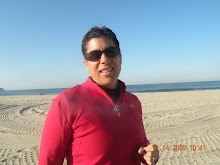Two words of advice- GROWTH PLATES !
I answer more email regarding this topic than any other so I feel that it is a perfect place to start my blogging experience.
Tennis is a sport of repetitive forward motion. This repetitive motion without planned periods of rest and proper preventative exercise can lead to overuse injuries in athletes going through growth spurts. Injury to the growth plate is not normally an acute injury caused by a one-time-trauma but by cumulative stresses from improper training techniques referred to as 'micro-trauma'.
The micro-trauma occurs at the end of the long bones of the arms and legs where the bone is still growing. At the end of each bone there is an epiphyseal plate that remains open until late puberty and a site where tendons insert called the apophyseal insertion. There is also articular cartilage that lubricates the joint surface. Compared to the strong muscles that attach to and near these sites these are areas of weakness and vulnerability.

The severity of the injury can range from mild irritation at the site to a fracture of the epiphyseal plate, apophyseal insertion disruption, articular cartilage damage or all three. The symptoms typically increase during times of growth and include pain that increases with participation and swelling at the site. Common sites of pain are at the knee, referred to as Osgood Schlatter's Disease; the heel, or Sever's Disease and the shoulder and elbow.
Unfortunately, there is no magic solution to this problem besides common sense...if pain persists or increases after a proper dynamic warm-up -STOP! Treat the symptoms with rest, ice, stretching and an anti-inflammatory such as ibuprofen. The important lesson to teach the young athlete is when to stop. The old adage, "No Pain, No Gain" is a thing of the past...my motto is, "No Pain, No Pain..." You won't become a champion if you are always injured and watching from the stands!
Another important factor is prevention. Strengthening the posterior muscles of the legs and upper back while increasing the flexibility of the chest and quadricep muscles will decrease risk of injury. Also be sure to avoid overhead lifts in the very young athlete. Growth plate injuries are preventable if you empower the athlete to listen to their bodies, respect pain and rest when they need to!







mary jo, i would love to hear your take on the back injuries that seem to be plaguing so many 15-16 yr old boys these days. is it the service motion? is it lack of flexibility? lack of core strength? a combo of the above? the boys i know who are suffering seem to suffer for many, many months (taking all that time off from their training) before finding relief. i would love to take preventative measures NOW with my 13 yr old!
ReplyDeleteIn the last 5 years I have seen and heard of a number of top players experiencing prolonged back injuries. There have been upper (thoracic spine) and lower or lumbar spine issues. You really answered your own question as it is not my 'take' but a fact that the increases in motion that are demanded of a kick serve combined with range of motion and strength deficits creates the 'perfect storm' for a growing boy. Most of these boys are tall and thin, experiencing a significant growth spurt in one year or what is referred to as Peak Height Velocity(PHV). The best way to prevent this in your 13 year old is to start now on a scapular stabilizing program, daily core stabilization and a flexibility program that includes stretching the chest muscles and internal rotators of the shoulder daily. Rapid growth spurts may still put all those muscles on stretch but if your child has sound daily rituals the effects will be less devastating.
ReplyDeleteI hope this helps and I will be addressing this problem in an upcoming blog.
thank you! i have shared your thoughts with my son's coach and will continue to work with him to make sure my son is doing everything possible to avoid suffering a similar injury. he hasn't really hit a big growth spurt yet, but i know it's coming down the pike and feel better being prepared!
ReplyDelete